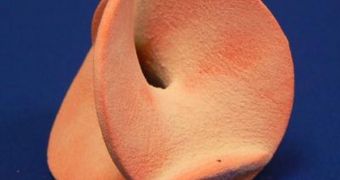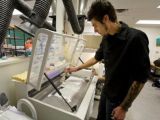Scientists at the University of Washington have recently announced that they have managed to develop a technique that allows them to print glass objects with a conventional 3D printer. The accomplishment, which comes one year after the same team showed that ceramics could be printed in the same manner, is similar to the established glassware manufacturing method known as pate de verre. Engineers and artists at the university's Solheim Rapid Manufacturing Laboratory were in charge of developing the new technology, known as the Vitraglyphic process.
“It became clear that if we could get a material into powder form at about 20 microns we could print just about anything,” UW Professor of Mechanical Engineering Mark Ganter, who is also the co-director of the Solheim Laboratory, explains. He adds that, in a conventional 3D printer, a layer of powder is set on a substrate, and then software-controlled ink jets only apply binder-solution droplets where needed. Thus, a 3D structure is formed. However, things are not that simple when glass is involved.
The scientists soon understood that even very small glass particles could not readily absorb liquid. Therefore, they say, the method they developed for ceramics had to be considerably altered. “Using our normal process to print objects produced gelatin-like parts when we used glass powders. We had to reformulate our approach for both powder and binder,” the leader of the new experiments, UW mechanical engineering graduate student Grant Marchelli, explains. The key, the team learned, was in the ratio of liquid to glass particles. After altering it, they successfully managed to create solid glass structures.
The ratio was also an important factor in determining the integrity of the resulting material. The experts had to tune it precisely, so that, when subjected to the correct temperature, the mix would solidify. After the printing technique was modified and perfected, the UW team released it for general use, which is something they also did with their ceramics printing method. “By publishing these recipes without proprietary claims, we hope to encourage further experimentation and innovation within artistic and design communities,” Solheim Lab Co-director and UW Associate Professor of Mechanical Engineering Duane Storti explains.

 14 DAY TRIAL //
14 DAY TRIAL // 
